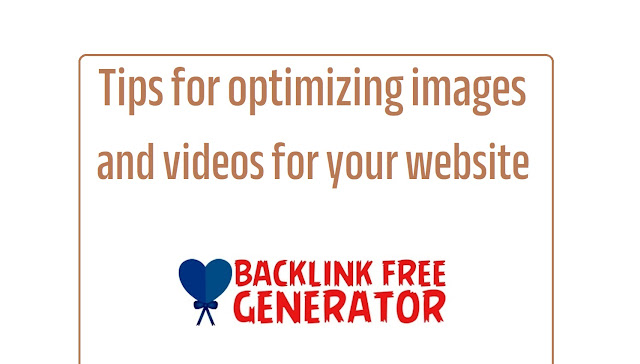Saturday, January 21, 2023
Tips for optimizing images and videos for your website
Here are some tips for optimizing images and videos for your website:
- Use appropriate file types: For images, use JPEG, PNG, or GIF (if animation is needed) as these formats are more web-friendly and will have smaller file sizes. For videos, use MP4 as this is a widely supported format.
- Compress images: Use tools to reduce the file size of images without sacrificing quality. This will make them load faster on the website.
- Properly size images: Make sure images are the appropriate size for the space they will be displayed in on the website. Resizing images using HTML or CSS can slow down page loading times.
- Use descriptive, keyword-rich file names: Use meaningful and descriptive file names for images and videos that include relevant keywords for better SEO and accessibility.
- Use alt text: Use alt text for images to provide a text description for search engines and users who may have difficulty viewing images.
- Optimize videos: Videos can slow down page loading times, so it is important to use a video hosting platform such as YouTube or Vimeo to host videos. Use a video sitemap to make sure videos are indexed by search engines and use closed captioning for accessibility
- Use webp for images: WebP is a new image format that provides superior lossless and lossy compression for images on the web. WebP lossless images are 26% smaller in size compared to PNGs and 25-34% smaller than JPEGs.
- Use lazy loading: Lazy loading is a technique used to load only the images and videos that are currently visible on the user's screen while they scroll the page. This can make your page load faster.
Subscribe to:
Post Comments
(
Atom
)


No comments :
Post a Comment